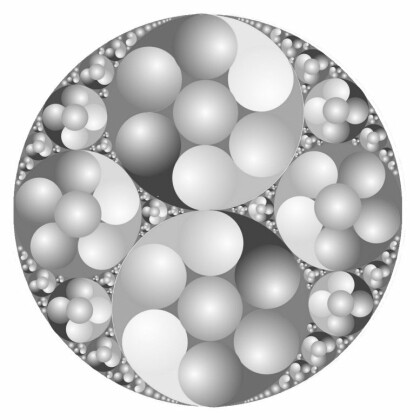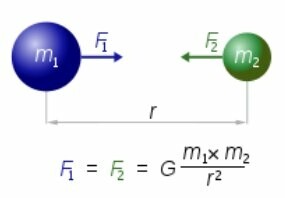LIFE: Love Infinitely Furthers Evolution by Sander R.B.E. Beals (good books to read .txt) 📖

- Author: Sander R.B.E. Beals
Book online «LIFE: Love Infinitely Furthers Evolution by Sander R.B.E. Beals (good books to read .txt) 📖». Author Sander R.B.E. Beals
Then we triplicated our previous mistake by defining space as the three dimensions of the imaginary box that we saw around us. The fact we now had three directions that were orthogonal and somewhat arbitrary complicated the art of Science, since up and down, and thus the direction that Gravity works, was not always in the same direction. Is it any wonder Einstein came to the conclusion that space was curved around masses....
And thus, Science became more and more complex to compensate for the fact we left out the analogs at first, leading me to the hunch that our much coveted Grand Unifying Theory would not be a Sphere embedding the whole set of disciplines, but rather something that would be at the base of things. And I guess, these last three books prove at least that within reasonable doubt.
The next discretion was when mechanics made room for electronics, and analog computers were again discretisized into digital devices. Sure, they can do just about everything we require of them, and can leave our celebrated ladies way behind when it comes to multitasking, but they are tools nonetheless, albeit very versatile ones.
And then there is the last discretion, the one between Haves and Have-Nots. We have always seen this happening in some way or other, and our current boundary seems to be the one between those with Web and those without. Also, most people see us humans as endowed with intelligence and consciousness where we see no such emergent properties for computers and the Web, although their combined complexity is far exceeding ours! And this list is concluded by Bob Marley and the Wailers, with "Souls Almighty!" ;-) I guess the moment we get to that point where we can see past those differences, our ticket to the stars is waiting for us. And they won't admit one to a movie, but to the real thing!
 Still though, I didn't have a childhood crush on movies if there wasn't any purpose in it: just now watching X-Files with my eldest daughter, I came to another realization, which strangely enough turns the diagram into its proper perspective: we all are essentially haves, until someone creates something we desire. Only then can we become Have-Nots. If we do not have a desire for the new creation, then we may be Have-Nots, but we will still be happy. Oddly enough, Mulder is right now reminiscing about his youth, when they had nothing but were delightfully happy all the time...
Still though, I didn't have a childhood crush on movies if there wasn't any purpose in it: just now watching X-Files with my eldest daughter, I came to another realization, which strangely enough turns the diagram into its proper perspective: we all are essentially haves, until someone creates something we desire. Only then can we become Have-Nots. If we do not have a desire for the new creation, then we may be Have-Nots, but we will still be happy. Oddly enough, Mulder is right now reminiscing about his youth, when they had nothing but were delightfully happy all the time...
Remember the section about us building our cell phones in an evolution, and them evolving such that we as users can appreciate and even love the way things are going? And during watching, it suddenly lit up my mind: one of those realizations that turn your mind inside out:
What are the differences between touchable stuff like cell phones and cars, a.k.a. hardware and software, and multimedia products like music, movies etc? Well, here's a few:
Multimedia is strictly bits and bytes, or information. As such it can be collected by any of us humans, since this is our unalienable right according to the UN and their Freedom of Information act which was reached in 1948 already. And that is just in the 'real' world.... Of course provisions were made to make such behavior punishable in certain cases, an article that was way larger than the clear and conscise definition before it...
Multimedia needs a medium by which it can be transferred. Things like vinyl, magnetic tape, CD, DVD, BluRay and computer memory like chips, sticks and disks are all forms of touchable products that are used to store and transport information. Material products may usually be carried as is, unless they are liquid or gaseous.
Unlike touchable products, multimedia is almost always accompanied by so-called credits, a list of contributors to the realization of it, that may or may not be exhaustive. For movies we get just about everybody including the carpenters that put together the sets, for music it is usually the artists and their composers, and maybe the studio crew, and for photos it is usually the photographer and / or the model(s)... You do not know who has put together your cell phone, because for such products, the list cannot be complete: dozens of factories may be cooperating in putting together something as complex as a tablet, or a laptop. Of course, for stuff like a Space Shuttle we of course make an effort, but normally, the public is mostly interested in if it works, not who to blame if it doesn't...
Material products may be sold and resold, without the producer of it complaining. Copyright in this case pertains to other factories which produce similar products way cheaper by cutting a few corners. For Multimedia products, the copying can be done by anyone with access to a computer, or the Web. That is an uncontrolable situation, which will end....
(most likely in a way as indicated by numerous SciFi writers: a money-free world)
And then one of those awesome tracks kicked in: Moonlight by Kamelot. "I have never craved the Systems's sympathy" is the opening line for it, which in fact shows me that I myself also don't: I craved knowledge of its inner workings, but that is an entirely different beast! Or is it? Is not the inside of the All still the All? Einstein once said: "I want to know God's thoughts, the rest are details!" So like Kamelot, I left most (Sub)systems lying on my left, which is just in easy reach for a lefty like me. By the way, "leaving something lying to the left" is a Dutch saying for leaving it behind for now which does not mean you've left it for good.
 "Swimming, Mr. Beals!!", the vending machine probably laughed silently... And it might well be right. Even though I took the image last week, the bubbles kept bubbling up in my mind.
"Swimming, Mr. Beals!!", the vending machine probably laughed silently... And it might well be right. Even though I took the image last week, the bubbles kept bubbling up in my mind.
And this afternoon, in the quiet moments before my train home was to arrive, it all suddenly fell into place like a jig-saw puzzle with enough intelligence to lay itself, if thrown out of the box!
I've always been in for a good cappuccino, and my fascination with the foam on top has lots to do with it. Apart from the great taste, I just love the dynamics of it, just like System of a Down did in their song called "Bubble Jungle", which intrigued me even more than the cappuccinos. So, if they say we're in a Bubble Jungle, and I liken everything to a System, let's see how both the Cosmos, our Earth and our cappucino or soap bubbles hold up :
They say "the meek shall inherit the Earth", and the cappuccino foam agrees: it is not easy being Mickey on the right here, befause the risk of losing structural integrity is far greater for big bubbles. "And why is that?", you ask? Well, that is easily seen: the smaller bubbles prefer the solidity of the cups circumference to that of the big bubbles, it is as if they know their big brothers are inherently unstable. And the big bubbles, having caught too much hot air, are stretching their skins to the limit! Same thing goes for groups in a civilisation: when they become larger, they also become easier to disturb. On the other hand, a widespread network of small bubbles cooperating can often make thing happen way more effectively!
If a big one buys the farm, there may be a few smaller ones that escape it, or are created in the process. But overall, bubbles behave more or less like tightly packed spheres, except that they adapt their spherical form a bit, in order to interface with the other bubbles in a better way. This is called adapting, a.k.a. Evolution.
And even a man-defined term as "going viral" is no unknown in bubble environments: one bubble ceases to exist, upsets the balance too much, and wipes out an entire field of brothers and sisters (this is most easily seen in tea or black coffee)
 And to show that the bubbles in reality can even be within each other, we can easily mistake the more complex SevenSphere image on the right as a cup of cappuccino. But it is probably not hot enough to really excite you, and too regular to even taste like one..... ;-)
And to show that the bubbles in reality can even be within each other, we can easily mistake the more complex SevenSphere image on the right as a cup of cappuccino. But it is probably not hot enough to really excite you, and too regular to even taste like one..... ;-)
Think: if I puncture the border between the two big circles, it would be like the stable interface suddenly let through everything between the two. Can you envision what would be the effect on the total structure? I can't, not completely. But no doubt the film industries powerful finite element simulation systems could calculate that.....
I could have called this chapter Gravity Sucks, and perhaps it does, but once more than two parties start with that action, it becomes complicated quite fast. But let's go back to essentials, the likeness between a lovely sunlit soap bubble and the Cosmos or even the star system we find ourselves in. Basically, both are balanced situation, that produce spheres. But there is a difference, if you stop to think for a moment:
Soap bubbles are balanced in that the pressure surplus of the air inside counters the elasticity of the soap in its efforts to contain it. So the force inflating the bubble works outwards, and the elasticity of the soap has balanced effect, because the surface of the sphere is curved around the center of the bubble.
 Planets on the other hand seem to be captivated by a net force that works downwards, and which we call Gravity. But is that all?
Planets on the other hand seem to be captivated by a net force that works downwards, and which we call Gravity. But is that all?
The well-known formula on the right suggests that the force with which both spheres are attracted towards one another is equal for both, proportional to the product of their masses, and inversely proportional to the distance between them, and that's just Newton's approach.
Now in the case of the Earth and the soap bubble, the mass product goes towards zero because of the minute mass of the soap bubble, and the distance between their center roughly stays the same: after all, what are the minute movements of a soap bubble when compared to the radius of the Earth? The gravitational constant doesn't change, but gravitational force between these two goes towards zero.
On top of that, the soap bubble has an equally loose relationship with the sun, so the higher it gets, the faster it will rise, like a balloon filled with helium, which is basically a "new and improved balloon", which has even less mass.
 Now Gravity doesn't blow up balloons, but tries to suck them dry. The overall structure stays the same as the image, but the soap bubbles are basically empty space, around heavenly bodies that have have a certain Gravity. Since the soap layers are right about where the Lagrange points between the various bodies are, we get complete Lagrange areas, which are basically the areas where the big guys cancel each other out, and local Gravity reigns. That does not mean that smaller bodies like stars or planets, or even entire galaxies can not exist there, but that the Gravity that they exert on one another is greater than that of the huge bubbles, the massive black holes.
Now Gravity doesn't blow up balloons, but tries to suck them dry. The overall structure stays the same as the image, but the soap bubbles are basically empty space, around heavenly bodies that have have a certain Gravity. Since the soap layers are right about where the Lagrange points between the various bodies are, we get complete Lagrange areas, which are basically the areas where the big guys cancel each other out, and local Gravity reigns. That does not mean that smaller bodies like stars or planets, or even entire galaxies can not exist there, but that the Gravity that they exert on one another is greater than that of the huge bubbles, the massive black holes.
And of course, in the direction of bigger heavenly bodies, the same imbalance of two masses exists, which enables moons to circle planets, planets to circle suns, and stars to circle galaxies...
Musical corroberation this moment is given by Hawkwind, and "Fable of a failed race" Truly a galactic piece of music.
If we then compare it with the hexagonal structures of a beehive, we see that the walls of the cells are structurally more sound than the empty space inbetween. Still





Comments (0)